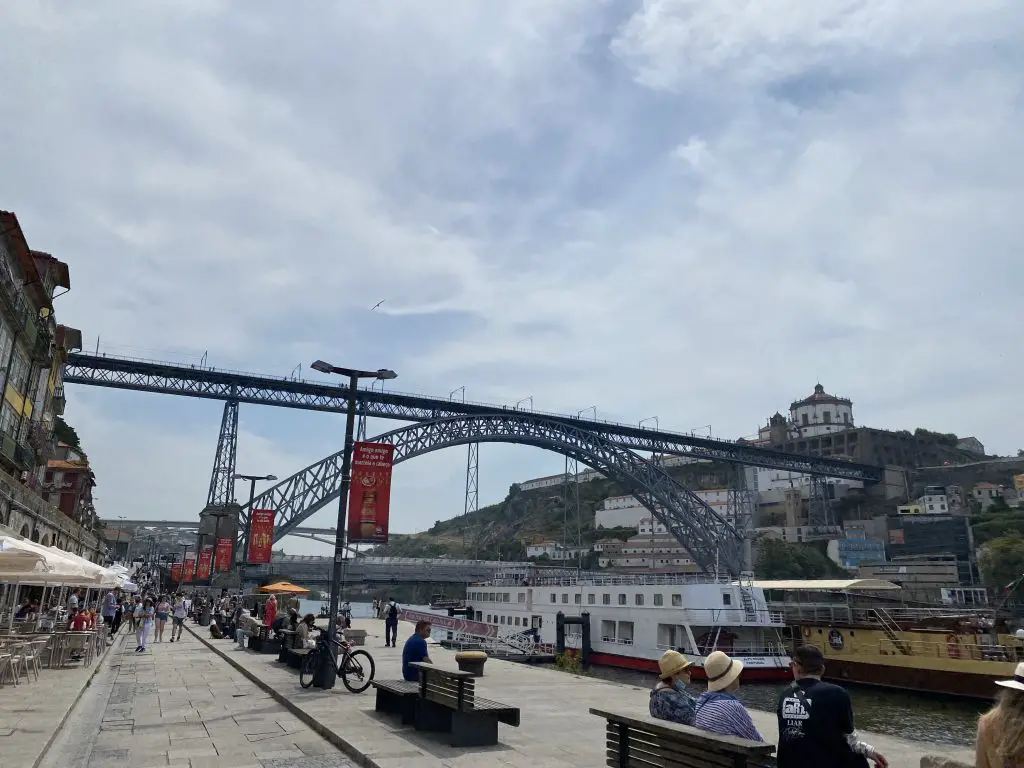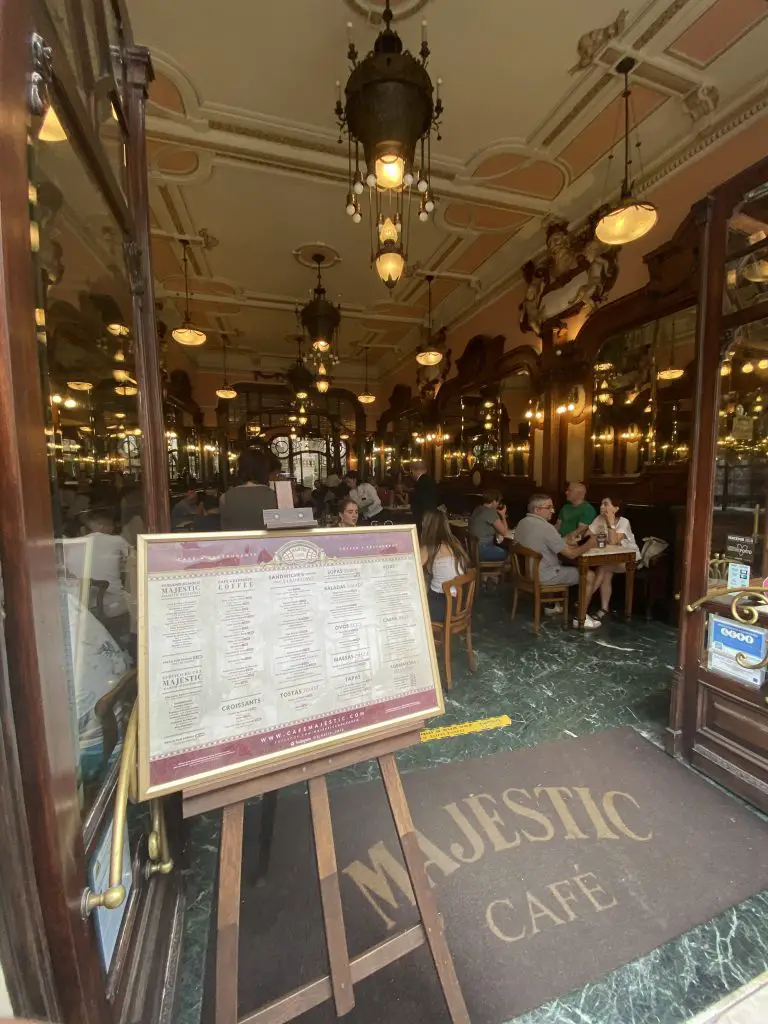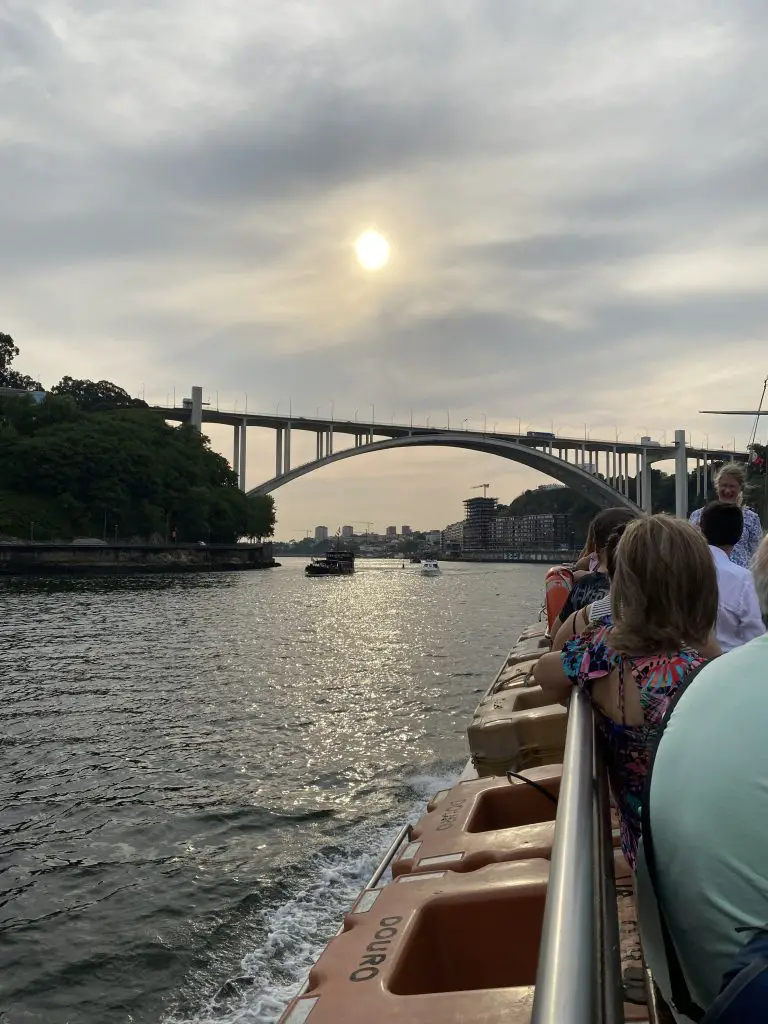Storytime: Porto was my first ever completely solo international travel experience to a place I’d never been. I only had a long weekend to work with, didn’t want to spend too much on flights to and from Barcelona, and hoped to pick a place with great food and drink. My Portuguese classmates insisted Porto would check off all three points, and so I planned my trip knowing almost nothing about the country. In the end, I fell in love with the town and weirdly felt some parallels between being in Porto and being in Budapest, which was another river-divided-town that far exceeded my nonexistent expectations. With that said, I think it’s time to answer our big question.





Be Put Under a Spell
Porto’s Harry Potter roots!
I’m a huge Potterhead. I can tell you about all the characters, have passionate opinions about all the storylines, and am plenty able to regale people about Harry Potter being written by a then-poor J.K. Rowling in a café. And yet, even I somehow missed the fact that the café Rowling wrote Harry Potter in was not in fact in Scotland, but Porto!
Here’s some fast facts for you: the long-time dictator of Portugal was named Salazar. J.K. Rowling’s old apartment is near a fountain featuring griffins. The first Harry Potter was written in the Majestic Café – which you can still visit! – in Porto. The University of Porto has special outfits that look uncannily like wizard robes for special events. And, although Rowling claims it isn’t related, a bookstore voted one of the most beautiful in the world is close to her old home and fans believe it was the inspiration for many of the sweeping staircases and other design choices for Harry Potter. See the sites and embrace where the magic began. 🙂
Pro Tip: While there are dedicated Harry Potter tours you can find, I joined a Free Tour walking tour (which, for those unfamiliar, are tip-based tours with no set cost) and found that the guide did a great job of pointing out and recommending Harry Potter landmarks. Plus, he was super knowledgeable about the other things we saw along the way! Just remember to bring good walking shoes if you do a walking tour like I did, as Porto is IMMENSELY hilly!


Food, Drink, and Merriment
Settle down with Porto’s delicacies!
The area all around Porto is famous for its production of Port wine, a super sweet, high-alcohol wine that comes in a few varieties like Tawny and Ruby. But did you know that “Porto” is split by a river, and that the side of the river that has the wine cellars is actually a city called Vila Nova de Gaia? Think of it similar to how Budapest is actually two cities on either side of a river named Buda and Pest, not that you can tell they’re different cities without being told so. While the wine is sold all over the city, get really involved by visiting the Wine Experience Museum by the river or taking a tour of the Douro Valley, where all Port is produced. Depending on your tour, you may learn a thing or two about testing the quality of olive oil or end up with a cat in your purse too (truly, a highlight of my trip). If you go in the summer, be warned that it can be super hot in the Valley; it was 108 degrees Fahrenheit when I went.
While pastéis de nata (Portugese cream tarts) are more of an “only in Portugal” than an “only in Porto”, I’d still be remiss not to mention them. If you’re looking for a little desert that makes you simultaneously think “I wish we had these at home!” and “I’m so glad we don’t have these at home, I’d put on 100lb” then these are for you. And trust me, you can find them everywhere – even the airport! A flakey pastry shell filled with a creamy custard and often topped with cinnamon, there’s nothing not to like. One of my favorite memories from Porto was sitting by the river with a glass of port and a cream tart until my hotel room was ready.
I must admit, I didn’t know it, but Porto is famous for being the birthplace of a crazy sandwich called the francesinha. Sort of like a really fancy, meat-lovers version of a grilled cheese, the francesinha is a sandwich filled with cheese, steak, sausage, and ham; wrapped with cheese; and topped with an egg and a special sauce. If it seems like a lot: yes, yes it is. I don’t think I could finish one in a single sitting if I tried, but it was definitely worth a try and extremely unique!
My last food recommendation for Porto is going to sound a bit out-of-the-box, but hear me out: McDonalds. With stained glass, gorgeous chandeliers, and amazing Art Deco architecture inherited from the previous restaurant called Café Imperial, this McDonalds is truly the fanciest fast food restaurant you’ll ever see. So fancy, in fact, that outside of this particular franchise you’ll often see someone who’s paid to wander around near the McDonald’s with a hawk to keep the pigeons away! If you do take the opportunity to dine there, keep an eye out for food offerings different from your home country, as McDonald’s in each country have some unique offerings.
Pro Tip: Curious about the olive oil trick I mentioned? Cover your bread in olive oil, then sprinkle some sugar on it. It’ll help neutralize the flavor of the oil and help you taste only the different notes in it!
Pro Tip: I personally went to Café Santiago to get a Francesinha. It was super close to the café Harry Potter was written in, which also serves a Francesinha, but far cheaper. Café Santiago was recommended to me by a group of locals, too!





Built Beautiful
Azulejos and Bridges galore!
If you’re someone who likes to stop and photograph beautiful buildings when you come across them, you’re going to adore Porto. One of the things you’ll almost certainly notice immediately are the beautiful, primarily blue azulejos tiles painted into elaborate designs all over the place. If you’re like me, you may assume the word comes from azul, which is “blue” in both Spanish and Portuguese, but you would be incorrect. As it turns out, the name and origin of the azulejos comes from a time hundreds of years ago when parts of Portugal and Spain were under Moorish rule. The Moors, coming from the north of Africa, brought with them great tile tradition that eventually evolved into the beautiful Portuguese tiles you can find decorating buildings all over the country. As far as the name, it comes from the Arabic word az-zulayj, meaning “polished stone”. If you want to see some of the most beautiful and surprising azulejos in the city, head to the São Bento central train station to find floor-to-ceiling artwork you can’t help but stop and stare at. Up top, you’ll see the evolution of transportation in the region. Down low, you’ll see a series of hand-painted scenes depicting famous Portuguese stories or simply Portuguese life. Commissioned in the early 1900s, surprisingly everything was completed by artist Jorge Colaço in just 11 years.
Given the river running through the middle of everything, it’s probably unsurprising that Porto has a lot of bridges. Six to be exact, with different styles, build dates, and architects. Of particular intrigue, one of the bridges is built by a student of the famous Gustav Eiffel and another of them is built by Eiffel himself! Admittedly, during my time in Europe I discovered that in addition to the famous Parisian tower Gustav Eiffel built a lot of bridges. Ironically, I’ve yet to see the Eiffel tower but have been to both his bridge and Porto and the one in Girona, Spain! PRO TIP: Along the river you can find big boats that do tours up and down the river to show you every part of town that’s visible from the water (including all six bridges and their histories!). They’re not super expensive and can even be purchased last minute in many cases. Alternatively, there is a gondola that goes down part of the river and gives you a good view of the main part of the city.
Pro Tip: Along the river you can find big boats that do tours up and down the river to show you every part of town that’s visible from the water (including all six bridges and their histories!). They’re not super expensive and can even be purchased last minute in many cases. Alternatively, there is a gondola that goes down part of the river and gives you a good view of the main part of the city.









